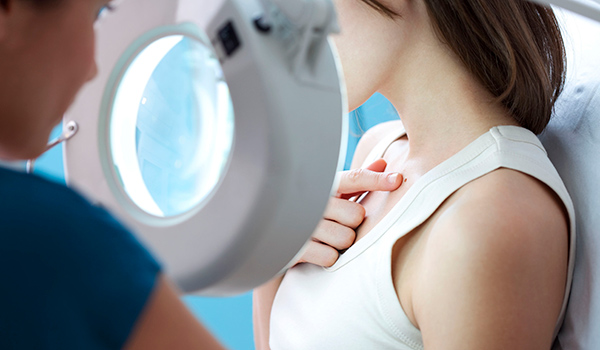
By now you’ve likely heard all the warnings about the dangers of skin cancer. You know that you’re supposed to wear SPF daily and reapply when you’re out in the sun for prolonged periods of time and especially if you’re swimming or sweating. But even if you take all the necessary precautions, you still need to keep an eye out for the signs of skin cancer. A sunburn from childhood could have done more damage than you realized and skin cancer can appear years after the initial sun exposure.
Some people are born with moles and many more people develop moles throughout childhood and young adulthood. Once a mole appears, it typically stays the same size, shape, and color. While moles are common and usually harmless, there are warning signs associated with melanoma, the most dangerous form of skin cancer due to its ability to rapidly grow and spread, to be aware of. Changes to an existing mole is a major sign to be on the lookout for. Furthermore, moles that suddenly appear in adulthood should also be looked at, especially if it falls into one of the below categories.
To make it simple to check for signs of melanoma, there’s the ABCDE rule outlined by the American Cancer Society. Use the following guidelines to help you determine whether you have any suspicious moles that should be :
- Asymmetry – Moles should be symmetrical, meaning each side should be the mirror image of the other. If one side is different than the other, you should have it checked by a professional.
- Border – Moles usually have a clearly defined border. If the mole has irregular edges, you should have it assessed as a possible sign of skin cancer.
- Color – While moles aren’t necessarily one specific color and can range from tan to black, a single mole should be the same color throughout. Moles that have varying hues of brown and black or even other possible colors should be looked at by a doctor.
- Diameter – Moles that are larger than a pencil eraser, about ¼ inch diameter, should be checked for melanoma.
- Evolving – Moles that change in shape, size, or color over time should be inspected for signs of skin cancer.
In addition to these commonly recognized signs, there is another warning for melanoma that is known as the Ugly Duckling Sign. Moles that fall into this category include sores that don’t heal, moles that change texture on the surface, and swelling around the mole. These are the moles that are obviously different than any other mole on your body and should also be checked by a skincare professional.
While melanoma is the deadliest form of skin cancer, it’s actually not as common as basal and squamous cell skin cancers. Here are the signs you should look for to spot these two prevalent types:
Basal Cell Skin Cancer
- Commonly found on areas that are often exposed to the sun, like your face and neck, but can be found anywhere.
- Can take many forms including raised, potentially itchy reddish patches; small, translucent, shiny bumps that are pink or red with possible blue, brown, or black spots; flat, firm, light-colored areas that resemble a scar; concave pink areas that have raised edges and a dip in the middle; or open sores that don’t heal or reappear after healing.
Squamous Cell Skin Cancer
- Often found on the face, neck, and hands, or other areas commonly exposed to the sun.
- Can take various forms including rough, scaly patches that might look crusty or bleed; raised growths that may be lower in the center; open sores that don’t heal; or growths that look like warts.
While these are common signs of skin cancer, it can take lots of different forms so be sure to point out any new spots or potential concerns to your doctor. It’s recommended that you do a full body check at home once a month in front of a full-length mirror with good lighting to keep track of anything that may change. Be sure to fill out your lifestyle, demographics, and personal medical history when completing your health risk assessment. After all, catching skin cancer early is the best way to beat it.

